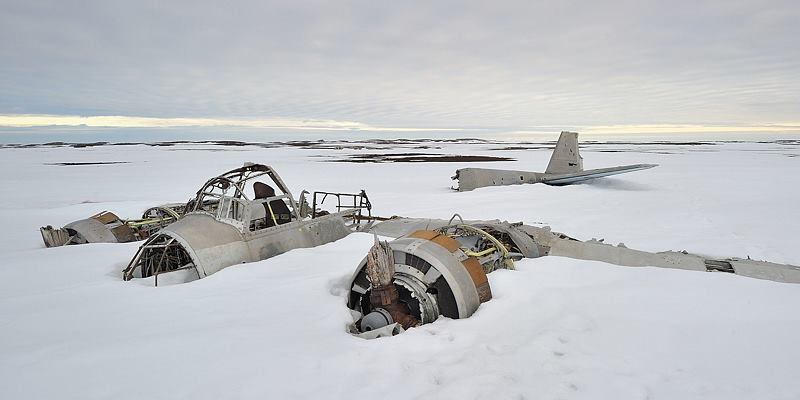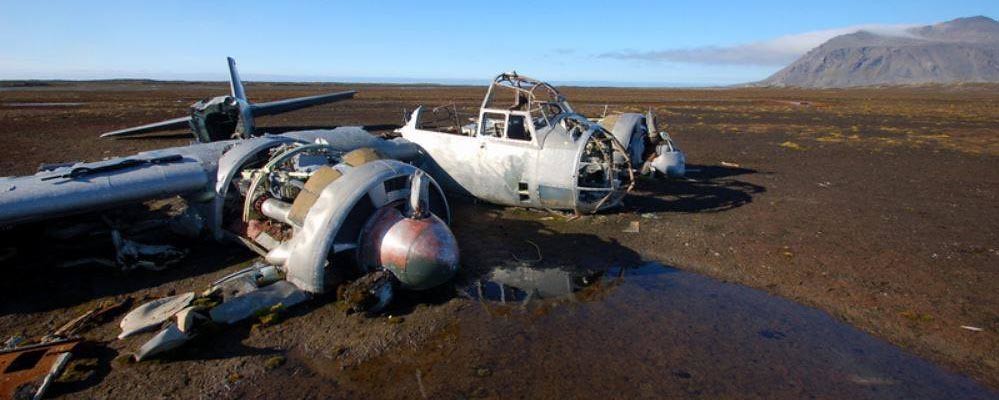The German World War II bomber that was 59 years abandoned on an Arctic island
During World War II, the main route for supplies sent from the US and the UK to the USSR ran through the waters of the North Atlantic.
To attack these Allied ships, which were heading for the Soviet port of Murmansk, the German Luftwaffe deployed its Kampfgeschwader 26 (26th Bombardment Wing) to Banak in the far north of Norway. One of the aircraft models that were part of this German unit was the Junkers Ju-88, a twin-engine aircraft initially designed as a dive bomber. It made its first flight in 1936 and entered service in 1939. It had a crew of four, was armed with five 7.92-caliber machine guns, and could carry up to 1,400 kg of bombs or torpedoes. More than 15,000 units were built. Today only a few remain and only two are complete.

In September 1942, the Kampfgeschwader 26 took off to attack the allied convoy PQ.18, which had set sail on September 2 from Loch Ewe, Scotland, with 40 merchant ships and fifty escort ships . In these attacks, Kampfgeschwader 26 used Ju-88 and Heinkel He-111 bombers. During that operation, the Luftwaffe lost 37 aircraft and the Allies lost 13 merchant ships.

On September 14, the Junkers Ju-88D-1 0881203 bomber, number 4N+EH, took off from Banak to participate in these attacks, with the aim of bombing the Soviet freighter A.Marti. The aircraft crew consisted of Feldwebel Gerhard Kunert (pilot), Lieutenant Hans Krüger (navigator), Unteroffizier Fritz Sundergeld (radio operator) and Unteroffizier Georg Lechner (gunner). During the attack, the bomber was damaged and had to land on the Norwegian island of Spitsbergen, in the Svalbard archipelago, located in the Arctic Ocean.

The plane managed to touch down on its belly (without deploying the landing gear) and suffering damage to the port engine, but no injuries among the crew, but it was not the best place to stay out in the open, not only because of the cold in that area, but also because of the threat of polar bears. Two days later, a German Heinkel He-111 bomber found them and dropped a message telling them to head north towards Sönak. There they were picked up by that same He-111 that same day.

The crew of that Ju-88 had been very lucky, but it would not last long: two months later, their plane was shot down in North Africa, killing all the crew. In turn, the Ju-88 remained in the place where it had landed, Kapp Borthen. German soldiers from the Banak base went to the place to recover some parts of the plane, and the rest remained there.

After the war ended, the plane ended up becoming a curiosity for the locals and for the few tourists who come to Svalbard. The Norwegian government ended up selling the plane to some locals in Mehamn, on the Norwegian mainland. , in order to be scrapped, but finally the Ju-88 was still there, suffering increasing deterioration.

In 1998 it was sold to the Norsk Luftfartsmuseum, the Norwegian National Aviation Museum, based in Bodø. The plane was finally recovered in 2001, with the help of a Norwegian SH-3 Sea King military helicopter. It is currently in the process of being restored, after having spent 59 years abandoned on that island.

The photos of the plane that you see in this post were published by the Norwegian website Bodø Luftfartshitoriske Forening and by the Polish page Lotnicza Warszawa on November 29, 1944. I learned of this interesting story from a tweet from Klaas Meijer.
|
Don't miss the news and content that interest you. Receive the free daily newsletter in your email: |
- Most read
- The 'hole' without civil flights around Paris during the opening of the Olympic Games
- Stunning footage of the F-15QA Ababil in flight recorded from its cockpit
- The firearms used by the Pontifical Swiss Guard, the smallest army in the world
- Eurofighter vs F-35: the opinions of professional pilots on these advanced fighters
- The first photo of an F-16 fighter with Ukrainian insignia and the details it has revealed
- The most distant deployment of the Spanish Air Force in Australia and New Zealand
- This is the driver station of an M1 Abrams tank and the impressive start of its engine

 ES
ES







Opina sobre esta entrada: